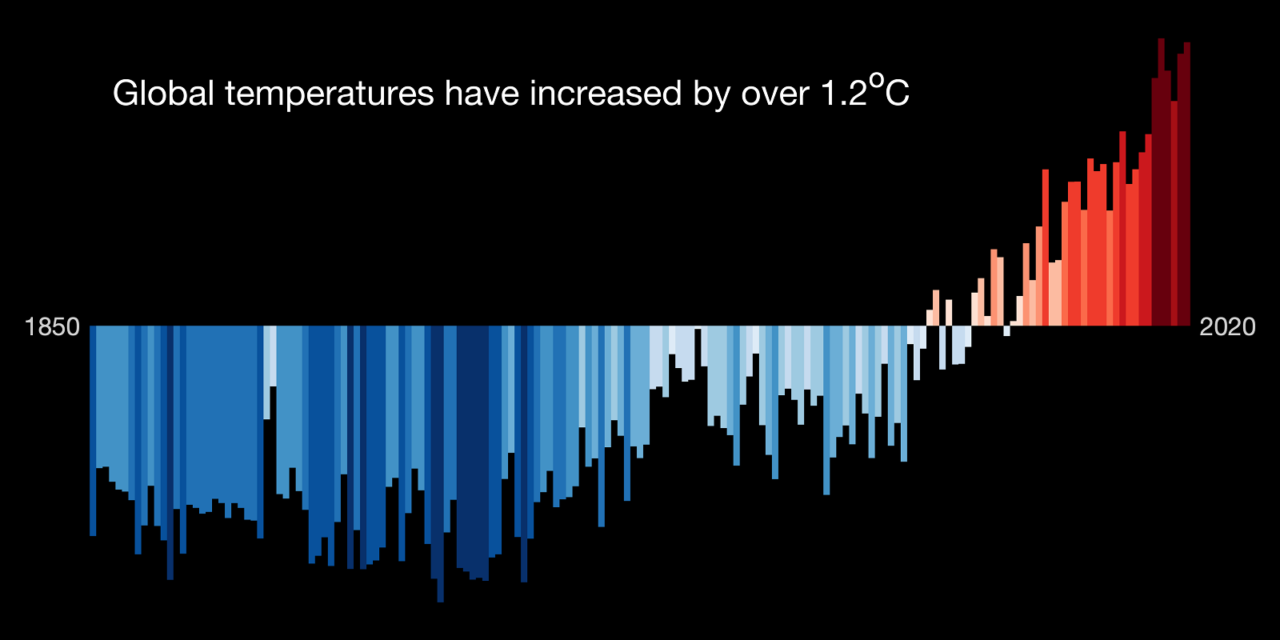by Technical Team, EW Nutrition
The Glasgow Climate Pact reached at the COP26 summit this November sent a clear message to businesses across the globe: Put sustainability on top of your corporate agenda or risk losing out. But how can food and feed producers translate the knowledge that climate change is happening into good business decisions? What impact is it causing, and which actions can we take today?
Why climate change is such a big deal
There is an overwhelming consensus among scientists that climate change is happening and that we need to stop it. Long-term changes in global temperature and weather patterns are nothing new. What is new is that these shifts are primarily driven by human activities.
Activities such as burning fossil fuels, livestock farming, and deforestation release carbon dioxides and other greenhouse gases (GHG) into the atmosphere. GHG trap the sun’s heat and cause average temperatures to rise.

Compared to the pre-industrial era, average temperatures are now 1.2° C warmer. That doesn’t sound like a lot. But the effects are disastrous and disproportionately so for people in low-income communities and developing countries.
Climate change is already causing sea level rises, threatening coastal regions, and ocean acidification, which disrupts global seafood supplies. Unprecedented losses in biodiversity are compromising food security and ecosystem services (such as pollination and irrigation). Biodiversity losses also expose us to zoonotic diseases – for example, the ongoing COVID-19 pandemic has zoonotic origins.
Due to climate change, the frequency and severity of extreme weather events are increasing. As countries in Europe and China experience historic rainfall and flooding, other parts of the world, such as Australia, the western US, and many African countries, face intense droughts. With further warming, Pacific islands will disappear under rising sea levels. And regions such as the Middle East will suffer from extreme heatwaves and see farmland turn into deserts.
How climate change affects agricultural businesses
While some crops and areas benefit from higher temperatures and changed weather patterns, on the whole, it is becoming more difficult to feed the world. Extreme weather events such as droughts, floods, hurricanes, heatwaves, and wildfires pose severe challenges for agricultural businesses.
Agricultural production costs are and will be increasing further because climate change effects entail water scarcity, raw material shortages, higher energy prices, and stiffer competition for land as certain areas become climatically unsuitable for production.

Feed and food crop yields and quality suffer both from torrential rain and flooding and heat waves and droughts. Researchers from the University of Minnesota have found that climate change is already reducing global rice yields by 0.3% and wheat yields by 0.9% on average each year. Another study showed that every 1° C increase in global mean temperature would, on average, reduce global yields of wheat by 6.0%, rice by 3.2%, maize by 7.4%, and soybean by 3.1%.
We also see increased problems with pests and diseases. Pests already destroy 40 % of global crop production each year. As temperatures rise, pests from fall armyworms to desert locusts expand into new territories. Due to warmer temperatures, disease vectors such as mosquitoes, flies, and ticks also proliferate and migrate, carrying new pathogens to previously unexposed livestock. Additionally, decreased forage quality, heat stress, and water shortages already compromise livestock immunity.
And let’s not forget that the wellbeing and safety of the workforce are directly affected by climate change effects such as extreme temperatures and reduced air quality. This is even more true for outdoor workers and the 143 million “climate migrants” we expect to see by 2050. Climate change has also triggered a significant cultural shift, especially in younger generations. The climate-conscious GenZ talent only wants to work for employers who genuinely commit to sustainability.
Let your business thrive despite climate change
Global warming must be limited to 1.5° C to avert the most devastating impacts. To achieve this, we have to cut greenhouse gas emissions in half by 2030. And by 2050, the world has to reach “net-zero” emissions, i.e., removing as many greenhouse gases from the atmosphere as we release into it.
Climate change regulations are becoming more stringent, especially for the energy, transport, and agricultural sectors. As UN High-level Climate Action Champion Nigel Topping puts it:
“If you haven’t got a net-zero target now, you’re looking like you don’t care about the next generation, and you’re not paying attention to regulations coming down the pipe. Your credit rating is at risk, and your ability to attract and keep talent is at risk.”
What can we do? Agriculture is unusual in that its contribution to anthropogenic climate change mostly comes from methane and nitrous oxide instead of carbon dioxide. Nitrous oxide emissions stem from soils, fertilizers, and manure, while ruminants and rice cultivation release methane.
Across these sectors, much more needs to be done at the policy level to incentivize sustainable husbandry, knowledge transfer, and targeted R&D. Still, wider adoption of existing best practices and technologies would help the global food and feed sectors to be more resilient and substantially reduce its GHG.
Enhanced efficiency fertilizers can reduce nitrous oxide emissions from soils, while phytogenic feed additives curb methane emissions in ruminants. And exciting research on topics such as pheromone-based pest control shows that climate change adaptation opens up new business opportunities.
Spend time on a detailed review of your company’s climate impact. This will reveal opportunities for emission reductions and decarbonization, both in your direct operations and along the value chain. More energy-efficient compound feed production, for example, helps feed mills but also improves the carbon footprint of the final animal products. And in times of Agriculture 4.0, investing in digital technologies, platforms, and processes will be vital to identifying and capitalizing on new business opportunities for climate-conscious production.
No one bears the brunt of climate change quite as intensely as agribusinesses. Let’s champion sustainability for improved corporate reputation, stronger risk management, long-run cost savings, market access, and attracting and retaining qualified employees and customers.

















